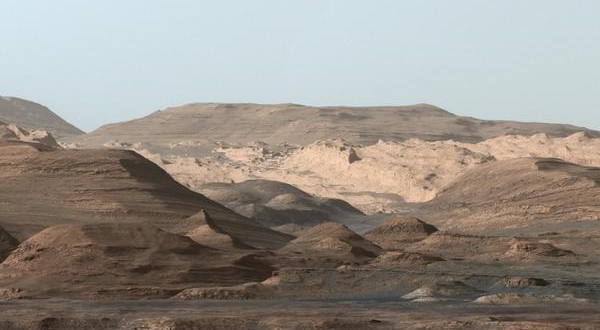Scientists have uncovered evidence that Mars once had long-lasting lakes and rivers, unlike the extremely temporary appearances of liquid water that seem to exist on the Red Planet today.
In a study published on the U.S. journal Science, the Curiosity research team determined that this water helped to fill the Gale Crater, where the rover landed more than three years ago, with sediments deposited as layers that formed the foundation for the mountain found in the middle of the crater today.
“Observations from the rover suggest that a series of long-lived streams and lakes existed at some point between about 3.8 to 3.3 billion years ago, delivering sediment that slowly built up the lower layers of Mount Sharp,” study author Ashwin Vasavada of the Curiosity research team said in a statement.
The findings built upon previous work that suggested there were ancient lakes on Mars, and added to the unfolding story of a wet Mars, both past and present. Last month, NASA scientists confirmed current water flows on Mars.
Before Curiosity landed on Mars in 2012, scientists proposed that Gale Crater had filled with layers of sediments. Some hypotheses were “dry,” suggesting that sediment accumulated from wind-blown dust and sand. Others focused on the possibility that sediment layers were deposited in ancient lakes.
The latest results from Curiosity indicated that these wetter scenarios were correct for the lower portions of Mount Sharp.
Based on the new analysis, at least some of the water may have been supplied by snowfall and rain in the highlands of the Gale Crater rim.
The study also showed that the filling of at least the bottom layers of the mountain occurred over a period of less than 500 million years. After the water was gone, the later segment of the crater’s history may have been dominated by dry, wind-driven deposits.
In addition, for flowing water to have existed on the surface, Mars must have had a thicker atmosphere and warmer climate than has been theorized for the ancient era when Gale Crater experienced the intense geological activity.
Agencies/Canadajournal

 Canada Journal – News of the World Articles and videos to bring you the biggest Canadian news stories from across the country every day
Canada Journal – News of the World Articles and videos to bring you the biggest Canadian news stories from across the country every day

